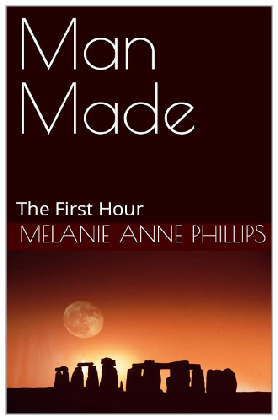Read the Science Fiction Thriller
From the founder of Storymind
Man Made follows a mysterious force as it sweeps around the globe erasing anything man made - from buildings, vehicles, and technology to medicines, clothing, and dental work.
Governments stagger under the panic, religions are at a loss for an explanation, scientists strive for any means to stop or divert the phenomenon, and the world’s population from families to individuals struggle to prepare for The Event, which will drive humanity back beyond the stone age.
The Event is coming.
Are you prepared?
~ Step 8 ~
Putting It Back Together
If you’ve been diligent in the last step and generated a lot of answers, you probably have a huge number of potential story points. But which ones to use?
Usually, you won’t be able to select two answers for the same question, as they would conflict. What’s more, some answers for one question might conflict with several from other questions.
The time has come to make some hard choices. In preparation for this, you need to get a good feel for all the potential directions your story might take depending upon which answers your choose to include.
When you came up with your answers, you were probably focusing on each question, one at a time, not on your story as a whole. So, the first thing is to stand back again, read over all the questions and answers from top to bottom straight through at least once or until you have a really good sense of what this grab back has to offer.
Now answer just one more essential question – how married are you to the original story concept you started with? If you really want to tell that original story, then go through your list of questions and answers and eliminate any that aren’t compatible with your initial concept.
Once you’ve completed this task, you can move on to Step 9.
But, if you are falling in love with some of the new potentials that have opened up, then go through your list and mark all the answers that you’d really like to include. Next, prioritize them as to which ones you are most excited about.
What you now have is a list of your very best and most interesting new creative concepts. Problem is, though they all have the same roots, they have diverged and may no longer be able to fit in the same story.
And this is where the hard choices come in. You need to pick one of all possible combinations of these new story points that is compatible both with your story concept and with each other.
There’s no easy way to do this. If you really like one new idea so much that you’d rather have it than any combination of others, then choose it first. Next, add your second most favorite new concept that is not incompatible with the first, and so on, until you have selected as many of your favorites as you can.
On the other hand, if there are many new concepts that are all top priority but can’t reasonably co-exist, then you need to try several, perhaps many, combinations until you find the one that has the greatest combined benefit for your story.
Though this takes time and is labor intensive, it is well worth it in the end, for your story will not only be far richer, but will excite you more in the writing of it, and therefore your work will be filled with far more passion, and your writing will progress more quickly.
The best way to try many different combinations is to use good old-fashioned index cards. Put each concept you’d like to include on its own card. Then, just like playing Scrabble, keep rearranging them, trying different groupings until your find the one that is the best for you.
Finally, organize that grouping into a list of its story elements that you can easily reference as preparation for Step 9, where you will weave them into your original synopsis in an all-inclusive revision.
